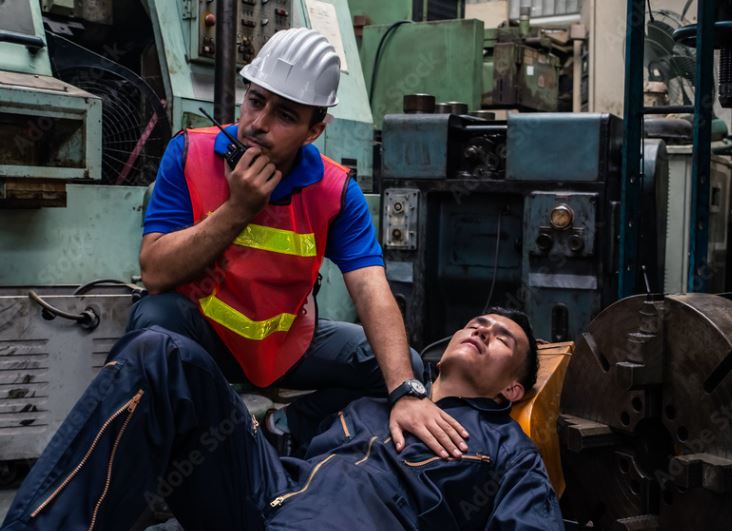Industrial Inspection Reforms: An Urgent Necessity
The recent catastrophic explosion in a chemical factory within the Dombivli Maharashtra Industrial Development Corporation (MIDC) area has starkly highlighted the dire need for comprehensive inspection reforms. This tragic incident, which resulted in fatalities, injuries, and extensive property damage, has reignited debates on the efficacy of current regulatory practices and the urgent need for overhaul.
Historical Context of Industrial Disasters
Historical data reveals a worrying pattern of recurrent industrial accidents in Maharashtra, with notable incidents reported in 2016, 2018, 2020, and 2023. Despite the government’s decision in 2022 to relocate 156 chemical factories from the Dombivli MIDC area to Patalganga, no significant progress has been made. The recent disaster is a grim reminder of the consequences of regulatory inertia.
Focus on Poor Inspection Rates
The inspection statistics paint a bleak picture. In 2021, only 23.89% of hazardous factories and a mere 8.04% of all registered factories in Maharashtra were inspected. This alarming shortfall is echoed in other industrial states such as Tamil Nadu and Gujarat, with inspection rates of 17.04% and 25.39% for hazardous factories, respectively. Nationally, the figures are equally dismal, indicating systemic inefficiencies.
Impact of Personnel Shortages
A significant factor contributing to poor inspection rates is the chronic shortage of inspectors. In Maharashtra, only 39.34% of sanctioned positions were filled, with 48 out of 122 officers appointed. While slightly better, Gujarat and Tamil Nadu also face similar challenges, with appointment rates of 50.98% and 53.57%, respectively. This inadequacy exacerbates the workload of inspectors, undermining the efficacy of the inspection system.
Prosecution and Its Deterrent Effect
The effectiveness of inspections is further diminished by low prosecution rates. In Gujarat, the prosecution rate stands at 6.95%, while Maharashtra and Tamil Nadu report slightly higher rates of 13.84% and 14.45%, respectively. These figures underscore the failure to enforce compliance, eroding the deterrent effect of inspections.
Criticisms of the Current System
Employers often criticize the current inspection regime, derisively referring to it as “inspector-raj,” implying harassment and corruption. While such criticisms are not entirely unfounded, the data suggests that the issue is not merely one of overzealous inspectors but also of a fundamentally flawed system that fosters rent-seeking behaviors.
Need for Meaningful Reforms
Reforms are indeed necessary but not of the kind currently being pursued in response to employer criticisms. Measures such as self-certification, randomized inspections, online inspections, and third-party certifications are inadequate and often violate key principles outlined in the International Labour Organization’s (ILO) Labour Inspection Convention (081) of 1947. According to the ILO, inspectors should have unrestricted access to establishments and should be sufficiently qualified and resourced to ensure compliance.
A Holistic Approach to Inspection
Effective reform should involve strengthening labor market governance by adhering to ILO guidelines, ensuring that inspectors can both enforce and facilitate compliance. This dual role would involve inspectors providing advice to employers and unions, thereby promoting a culture of safety and compliance.
Accountability for the Enforcers
To ensure accountability, there should be penalties for state failures in governance. Simple compensation to victims and their families is insufficient. A penal system for governmental and departmental lapses would pave the way for more robust legal compliance and reinforce the state’s fundamental duty to ensure a safe working and living environment.
Learning from Recurrent Disasters
The recurrence of similar industrial disasters highlights a failure to learn from past mistakes. Meaningful reforms must go beyond superficial changes and address the root causes of systemic failures. This involves not only improving inspection rates and personnel numbers but also fostering an ethical and efficient inspectorate.
Conclusion: A Call to Action
The recent industrial accidents underscore the urgent need for inspection reforms. By implementing comprehensive changes and holding enforcers accountable, the government can create a safer and more compliant industrial environment. Ensuring the safety of workers and residents should be paramount, and this can only be achieved through meaningful and effective regulatory reforms.
Summary:
| Key Learning Points |
|---|
| Recent industrial disasters highlight the need for robust inspection reforms. |
| Historical data reveals a pattern of recurrent industrial accidents. |
| Inspection rates are alarmingly low, indicating systemic inefficiencies. |
| Chronic personnel shortages exacerbate the inspection shortfall. |
| Low prosecution rates undermine the deterrent effect of inspections. |
| Criticisms of “inspector-raj” highlight issues of harassment and corruption. |
| Meaningful reforms should adhere to ILO guidelines and strengthen governance. |
| Accountability measures for state failures are essential for robust compliance. |
| Learning from past disasters is crucial to prevent future tragedies. |
| A holistic approach to inspection can ensure a safer industrial environment. |

Sunil Garnayak is an expert in Indian news with extensive knowledge of the nation’s political, social, and economic landscape and international relations. With years of experience in journalism, Sunil delivers in-depth analysis and accurate reporting that keeps readers informed about the latest developments in India. His commitment to factual accuracy and nuanced storytelling ensures that his articles provide valuable insights into the country’s most pressing issues.



